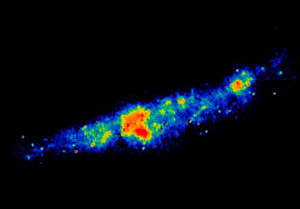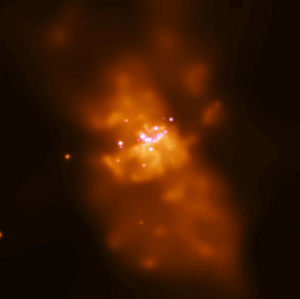|
It's the Astronomy Online non-Blog, or un-Blog.
Everyone has a blog now and since I am no follower of trends, I decided to merge the blog with the website. And I don't want to neglect the website in favor of posting on the blog.
These are the pages that were on the blog of old:
- Home
- Archive (Index of Pages)
- Me
- Current Trends
- Links
- Soho Live
Links:
Google Maps - Mars
Google Maps - Moon
HiRISE
HiRISE - MRO Imaging
Mac Singularity
Meade4M
Slackerpedia Galactica
Software for the Mac
Starry Night Online
Venus Maps
More Favorites:


































Thank you for visiting!
|
|
 |
|
Hubble Turns 16 - And More About M82:
The Hubble Space Telescope is now 16 years old. For the past 16 years, the Hubble has provided the best views ever of our Universe. The list of accolades is long, and a visit to the Hubble Space Telescope image gallery will certainly show just what the scope is capable of.

NASA, working with the European Space Agency (ESA), has released this mosaic of M82. It boasts the highest resolution ever of this galaxy - it is also zoomable by clicking on the image.
M82 is a starburst galaxy, meaning that it is undergoing tremendous star birth. The blue color of the entire disk indicates the stars are young and hot - consistent with a starburst galaxy. The reddish hydrogen gas appears to be blashing out from the center of the galaxy. At the core of this galaxy is a supermassive black hole which is believed to be proving the energy to blast away the excess dust (M82 is also a "radio" galaxy, see image below).

M82 is a member of the M81 Group and the starburst formation is a result of gravitational interactions with M81. The X-ray image shows some of the more energetic processes occuring at the core (below).

The Spitzer Space Telescope has also been busy with M82. A large, previsously unseen halo has been imaged surrounding M82.

The onboard spectrometer indicates the composition of this halo are Polycyclic Aromatic Hydrocarbons (PAH's) which is formed on Earth by combustion processes like engines and smoke-stacks. This information is consistent with large-scale star formation. Now the task should be to use the Spitzer to image other starburst galaxies to determine if this halo formation of PAH's is an expected occurence.
More information on the Sweet 16 image is available from the Hubble Newcenter.
Next Post | Previous Post | Back to Top
|
|

